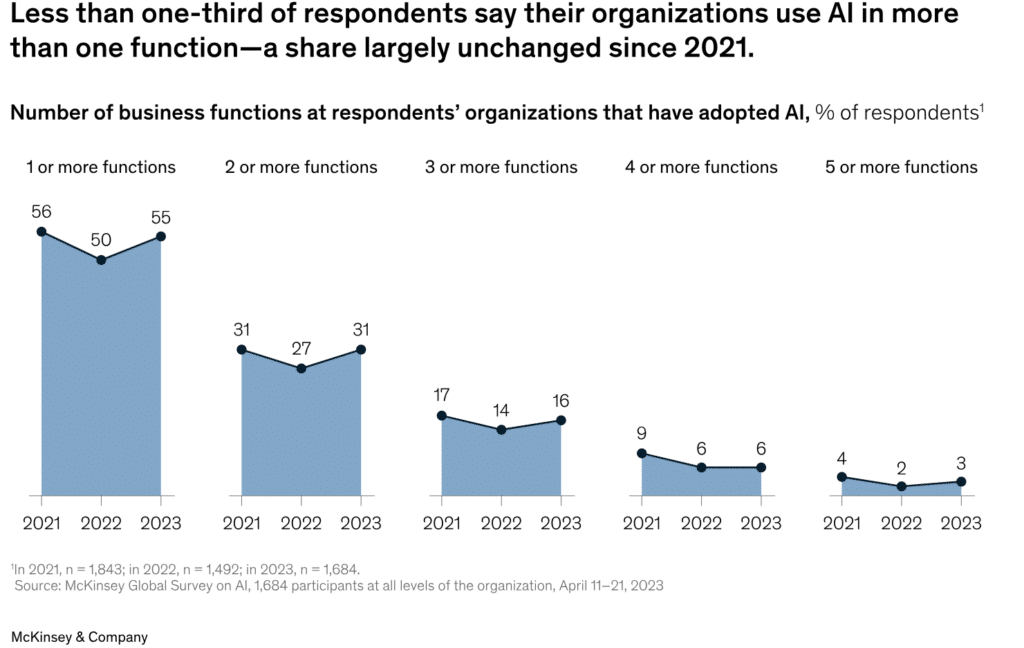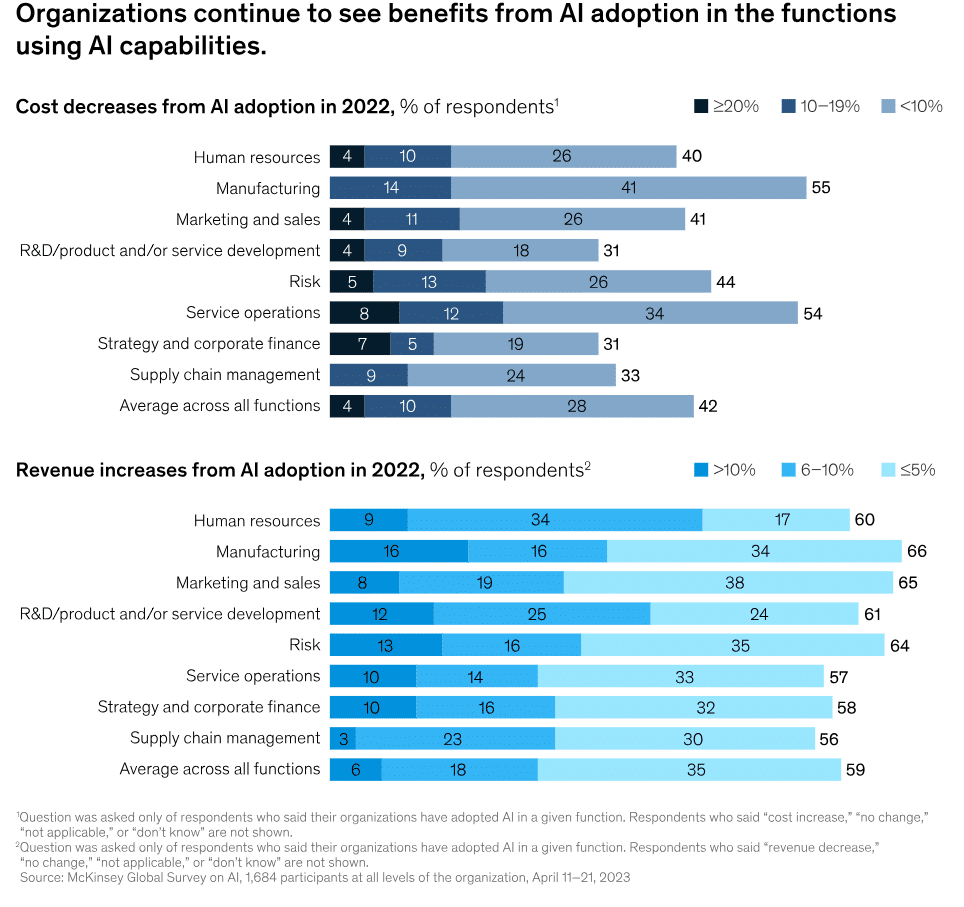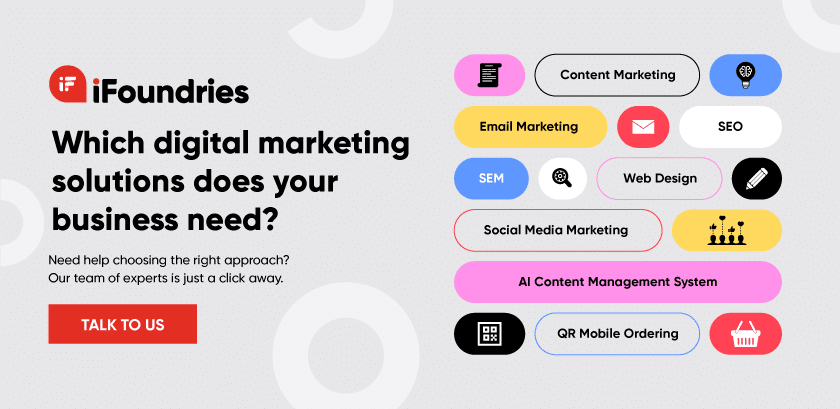ChatGPT, Search Generative Experience (SGE), and Siri–are just some of the most common examples of generative AI, continuously redefining how multiple sectors work, be it healthcare, communication, marketing, or more.
For example, generative AI models can help businesses and marketers with content generation or ideation for their marketing campaigns. They can basically tell the gen AI what they want it to do, and then it can conveniently generate material according to their needs within seconds.
This technology possesses the incredible ability to create novel content and solutions that make each industry’s workflow and employees more efficient. Getting to know generative AI better is imperative to keep up with emerging technology that may affect your workforce. So, if you’re up to being an innovative leader in your niche, read on to learn more.
What is Generative AI?
Generative AI is simply the use of artificial intelligence to create new and original content such as videos, text, images, music etc. This type of artificial intelligence is not new anymore; it was, in fact, established in the 1960s in the form of chatbots.
The earlier types of artificial intelligence involved data analysis, but with generative AI, considering its name “generative”, its capabilities extend to (of course) generating several types of content.
However, looking at the ‘generative AI meaning’ from a more technical perspective, it is a kind of machine learning that can multitask and adapt its generation process based on user input or specific goals.
How? It uses neural networks to identify structures and patterns within data to generate new content. Neural networks are computational models that replicate the complicated functionalities of the brain. Like humans, it can learn and process data, enabling recognition and decision-making for machine learning.
So, how are companies using generative AI in their operations? It can be used in the workplace for data interpretation, writing computer codes, drawing conclusions, or just generally solving complex problems with ease. It is designed to mimic humans–how we write, speak, or strategise in a given situation.
The Widespread Adoption of Gen AI
A 2023 McKinsey Global Survey confirms the surging growth of leveraging generative AI tools in different companies or organisations.
A third of respondents reported that their organisations are using gen AI recurrently in at least one business function. Three departments stand to gain the most from this technology: product development, marketing and sales, and service operations.
The extent to which industries prefer integrating gen AI into their processes led to 40% of the survey takers saying their organisations are bound to increase their AI investments overall because of advances in generative AI. This statistic is actually parallel to how industries use this technology because gen AI has won the interest of businesses, with executives personally using it for their work.
Some companies already use it on their boards’ agendas. In the survey, 79% of respondents state that they have some exposure to generative AI, inside and outside work, and 22% say they are regular users.
Additionally, AI for enterprise usage is most common among respondents in the technology sector.
Leading Companies and Gen AI Adoption
There are organisations already at the forefront of generative AI adoption–companies that use this technology in more than one business function. They are called AI high performers.
AI high performers are more likely to use Gen AI in their product and service development operations, specifically in creating new AI-based products, revamping existing ones, and optimising the product development cycle. They also use it in their risk and supply change management area, within human resources, and in workforce deployment optimisation.
Furthermore, AI high performers do not view cost reduction as their top motive for incorporating AI in their efforts, which is quite unusual considering how most businesses prioritise this goal. In the same Mckinsey Global Survey, the AI high performer respondents see creating new businesses or sources of revenue as their primary objective for AI adoption.
Shifting Talent Needs and Workforce Effects
While many organisations have positively embraced generative AI in their workflows, some substantial effects on their workforce still need to be explored and addressed.
The application of generative AI in the enterprise may mean widespread reskilling initiatives to respond to the changing skill sets required for AI adoption, as well as workforce cuts.
Respondents think AI adoption will reshape many workforce roles in the following years, with more employees being reskilled rather than separated. They expect service operations to be the only business area that will experience a cut in workforce size.
Meanwhile, AI high performers anticipate the need for significant reskilling. Surveys show that due to AI adoption, they’re three times more likely to plan for reskilling 30% of their workforce in the next three years.
Gen AI Impact on Overall AI Adoption
While AI high performers exist, overall AI adoptions remain steady for now. The survey reveals limited AI utilisation within companies.

Less than a third of respondents say their organisations leverage AI in more than one business area, with adoption focused on product and service development and service operations departments.
When it comes to investment returns, several respondents reported AI-related revenue increases within business functions that leverage AI, and more organisations are expecting to increase their AI investment in the next three years.

Gen AI Adoption and Marketing
Generative AI is undoubtedly a powerful technology with the potential to revolutionise various industries, and marketing is no exception–especially since it is one of the most common business functions using artificial intelligence in its operations.
Using AI for SMBs or generative AI for businesses ushers significant changes to how marketing organisations operate. Yes, it poses challenges and positive effects, but one thing is for sure–strategically adapting and being smart in its application is crucial to ride in this change.
As marketers and technology implementers, our team at iFoundries understands the power of generative AI and its potential to transform marketing. As a result, we are able to provide our clients with artificial intelligence that complements their workflow and goals.






